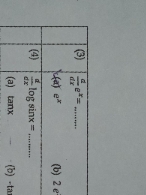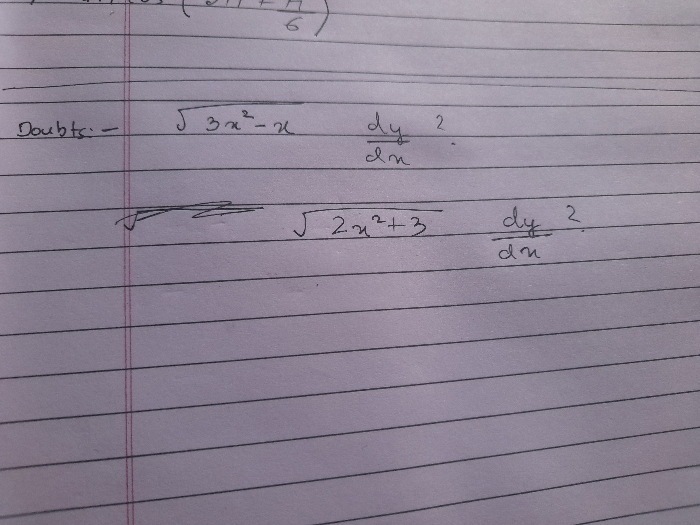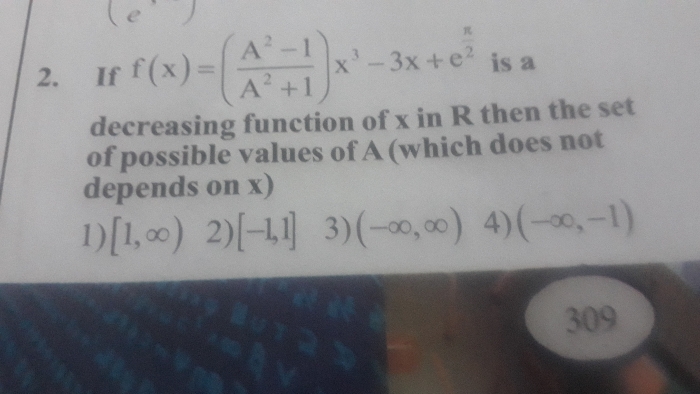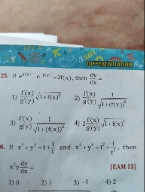JEE Class main Answered
help
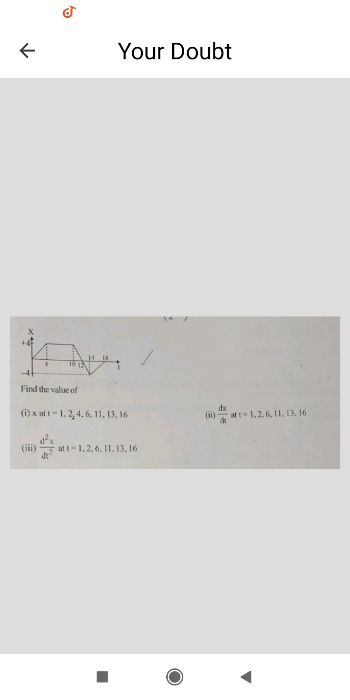
Asked by arushkumar6607 | 16 Jun, 2022, 08:46: AM
when time is greater than zero and less than 4 , displacement is linearly increasing
let x = a + b t ................................(1)
at t = 0 , x = 0 , hence we get a = 0
at t = 0 , x = 4 , hence we get b = 1
hence during the interval t=0 to t=4 , displacement x = t
---------------------------
During the interval t=4 to t = 10 , displacement x remains constant as 4
----------------------------------
when time is greater than 10 and less than 14 , displacement is linearly decreasing
let in this time interval , x = a + b t ................................(2)
at t = 10 , x = 4 , hence we get a + 10 t = 4 ............... (3)
at t = 14 , x = -4 , hence we get a + 14 t = -4 .................(4)
By solving eqn.(3) and eqn.(4) , we get a = 24 and b = -2
hence during the interval t=10 to t=14 , displacement x = 24-2t
---------------------------------------------------------
when time is greater than 14 and less than 18 , displacement is linearly increasing
let in this time interval , x = a + b t ................................(5)
at t = 14 , x = -4 , hence we get a + 14 t = -4 ............... (6)
at t = 18 , x = 0 , hence we get a + 18 t = 0 .................(7)
By solving eqn.(6) and eqn.(7) , we get a = -18 and b = 1
hence during the interval t=10 to t=14 , displacement x = t-18
----------------------------------------------------------------------------------------------
hence given displacement as a function of time t is
| Displacement equation |
time interval |
| x = t | 0 < t < 4 |
| x = 4 | 4 < t < 10 |
| x = 24 - 2t | 10 < t < 14 |
| x = t - 18 | 14 < t < 18 |
From above expressions we get displacement at required time as given in table
| t | x |
| 1 | 1 |
| 2 | 2 |
| 4 | 4 |
| 6 | 4 |
| 11 | 2 |
| 13 | -2 |
| 16 | -2 |
-------------------------------------------------------------------------
Velocity dx/dt as a function of time t is
dx/dt = 1 , when 0 < t < 4
dx/dt = 0 , when 4 < t < 10
dx/dt = - 2 , when 10 < t < 14
dx/dt = 1 , when 14 < t < 18
From above expressions we get velocity at required time as given in table
| t | dx/dt |
| 1 | 1 |
| 2 | 1 |
| 4 | 0 |
| 6 | 0 |
| 11 | -2 |
| 13 | -2 |
| 16 | 1 |
--------------------------------------------------------
since velocity is constant in all time intervals, acceleration d2x/dt2 is given as
d2x/dt2 = 0 , when 0 < t < 18
Answered by Thiyagarajan K | 16 Jun, 2022, 10:07: AM
JEE main - Maths
Asked by jameelmohd765 | 27 Apr, 2024, 10:23: AM
JEE main - Maths
Asked by namithnandan838 | 03 Mar, 2024, 20:16: PM
JEE main - Maths
Asked by anuragkumarjha76 | 10 Jan, 2024, 12:21: PM
JEE main - Maths
Asked by gunraiwal9c15 | 25 Jun, 2022, 11:24: AM
JEE main - Maths
Asked by gamingwired318 | 17 Jun, 2022, 10:19: AM
JEE main - Maths
Asked by gamingwired318 | 16 Jun, 2022, 20:37: PM
JEE main - Maths
Asked by gamingwired318 | 16 Jun, 2022, 20:36: PM

